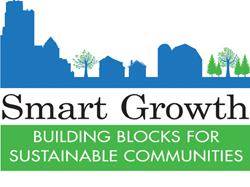Building Blocks for Sustainable Communities

- Background
- Communities Selected for 2016-2017
- Past Recipients of Building Blocks Assistance
- Assistance From Grantees
Background
Many communities around the country are asking for tools to help them achieve their desired development goals, improve quality of life, and become more economically and environmentally sustainable. In response to this demand, EPA developed the Building Blocks for Sustainable Communities Program in 2011.
Building Blocks for Sustainable Communities provides quick, targeted technical assistance to selected communities using a variety of tools that have demonstrated results and widespread application. The purpose of delivering these tools is to stimulate a discussion about growth and development and strengthen local capacity to implement sustainable approaches.
A tool includes:
- An agenda, presentations, and exercises that help facilitate discussion around a given topic.
- Data or information from the community that can be analyzed, helping to drive a conversation.
- An action-oriented process that leads to a set of potential next steps.
Technical assistance is delivered by EPA staff and EPA-hired consultant teams. Each technical assistance project includes:
- Public engagement through a one- to two-day workshop.
- Direct consultation with relevant decision-makers.
- A memo outlining specific steps the community could take to implement the ideas generated during the workshop.
See the Frequently Asked Questions About Building Blocks for Sustainable Communities for more information.
Communities Selected for 2016-2017
In December 2016, EPA selected 25 communities to receive Building Blocks assistance. Five tools were offered:
- Creating Equitable Development: Helps communities evaluate their priorities to work toward equitable development and support community goals for housing, local businesses, jobs, transportation, and preserving opportunities for residents. Communities receiving the tool are:
- Brownsville, Texas
- Kingston, New York
- Lenox, Massachusetts
- Miami, Florida
- Oglala Sioux Tribe/Pine Ridge, South Dakota
- Pueblo, Colorado
- Planning for Infill Development: Helps local governments identify obstacles to infill development and strategies for overcoming those obstacles. The tool is based on Attracting Infill Development in Distressed Cities: 30 Strategies. Communities receiving the tool are:
- Apache Junction, Arizona
- Fairview Park, Ohio
- Raton, New Mexico
- Willamina, Oregon
- Sustainable Strategies for Small Cities and Rural Areas: Helps communities evaluate how well their zoning codes, policies, and programs align with smart growth principles. The tool is based on the Smart Growth Self-Assessment for Rural Communities. Communities receiving the tool are:
- Acadia Parish, Louisiana
- Bishop, California
- Questa, New Mexico
- Randolph, Nebraska
- Winona, Minnesota
- Flood Resilience for Riverine and Coastal Communities: Helps communities prepare for climate change-related flooding and plan for disaster resilience by assessing local plans, policies, and development regulations. The tool is based on the Flood Resilience Checklist. Communities receiving the tool are:
- Logansport, Louisiana
- Myrtle Beach, South Carolina
- Pocomoke City, Maryland
- Skykomish, Washington
- Wareham, Massachusetts
- Green and Complete Streets: Helps communities develop strategies for greening their streets based on national models and case studies. Communities receiving the tool are:
- Baltimore, Maryland
- Central Falls, Rhode Island
- Detroit, Michigan
- Hartford, Connecticut
- Manatee County, Florida
The tools are described in more detail in the 2016-2017 Request for Letters of Interest. The request closed on October 12, 2016, and is posted here for reference only.
Past Recipients of Building Blocks Assistance
EPA has conducted more than 150 Building Blocks projects in 45 states. See the list of communities that received assistance.
Assistance From Grantees
In addition to the EPA Building Blocks assistance described on this page, EPA provides grants to nonprofit organizations to provide similar assistance to communities. Learn more about assistance from the grantees.
